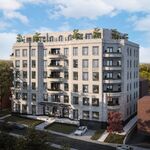We're better off not building some of the Transit City lines. The entire scheme should be put on the backburner until things like the GO network, fare integration, and the DRL are dealt with.
Maybe nothing will change, but there's certainly the possibility things will. The new lines won't even be property of TTC. They will be owned by Metrolinx, and one can hope the Metrolinx guys have their heads screwed on straight enough that they will call TTC out on their bouts of operation incompetence. And the physical properties of this corridor in itself is different enough from Spadina or St Clair that some of the more obvious problems won't be an issue.
And we shouldn't bother to address as many operational cancers as possible within the TTC
before spending $10 or $12 or more billion dollars on the lines? There's better things we can do with that much money...a funding windfall of a lifetime and it's being squandered (though even a funding windfall isn't enough to pay for all of Transit City's bloat).
I'm imagining town houses, mid-rises, and streetfront retail on the current greenfields along Richview.
You should take a trip along Sheppard, from Downsview to well east of Yonge to see what this fantastic future Avenue will actually end up like, keeping in mind that Eglinton will be wider and less urban than Sheppard. The corridor should be used for transit and they can develop whatever parcels are left over.
The people who live in between Lawrence & Eglinton at Yonge are much more car-dependant than those who live walking distance from the stops. I'm not insulting the neighbourhood, it is beautiful and pleasant and has great restaurants and shops, but it is certainly underserved by transit compared to other neighbourhoods on Yonge, and this seems to have an influence on the travel patterns of residents.
The point you missed is that Lawrence and Eglinton stations are over 2km apart...Islington to Royal York is only 1km. The 1km stretch of Yonge north of Eglinton is also blessed with a great retail strip, so it's not like they're walking across hot coals to get to the subway. If a Lytton/Blythwood station had been built decades ago, the area might have redeveloped, but today there's almost nothing there, mostly just a few Lawrence Park mansions and a few apartments on Yonge served by the 97. There's no comparison with a station like Russell or Wincott on Eglinton, which would exist to slash an entire minute or two off the walk for an entire one or two hundred people and do nothing to change travel patterns.
Well it's underground, so adding more any more stations here wouldn't be practical.
Instead, we're adding stations like Russell to serve 300 detached houses in Etobicoke...what's practical about that?
nfitz is right, one LRV driver in Transit City can replace about 5 bus drivers. Your conspiracy theory doesn't hold up, monkey.
5 bus drivers can run at 5 times the frequency of 1 LRT driver, or can run on multiple branches. It's not like we can serve the whole city properly by having a single driver drive a single 10,000 car train wandering around the suburbs like some giant Transit Snake game...frequency matters and is at the core of TTC philosophy.




